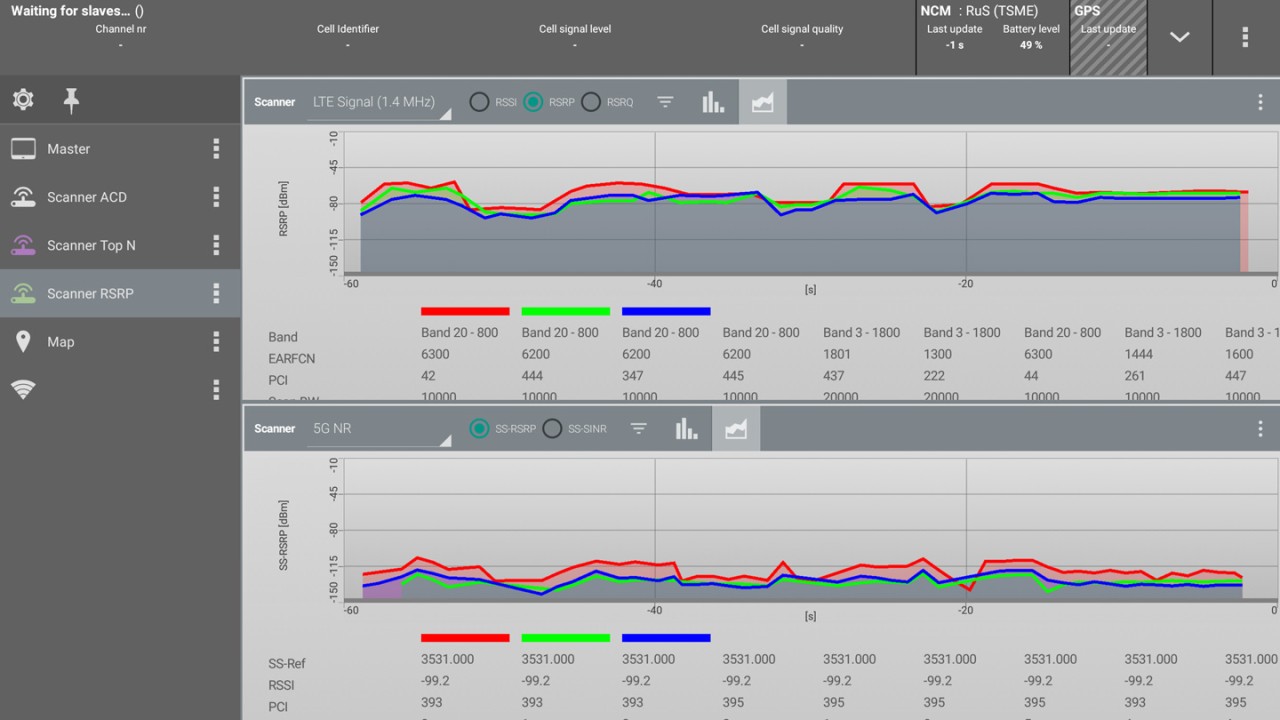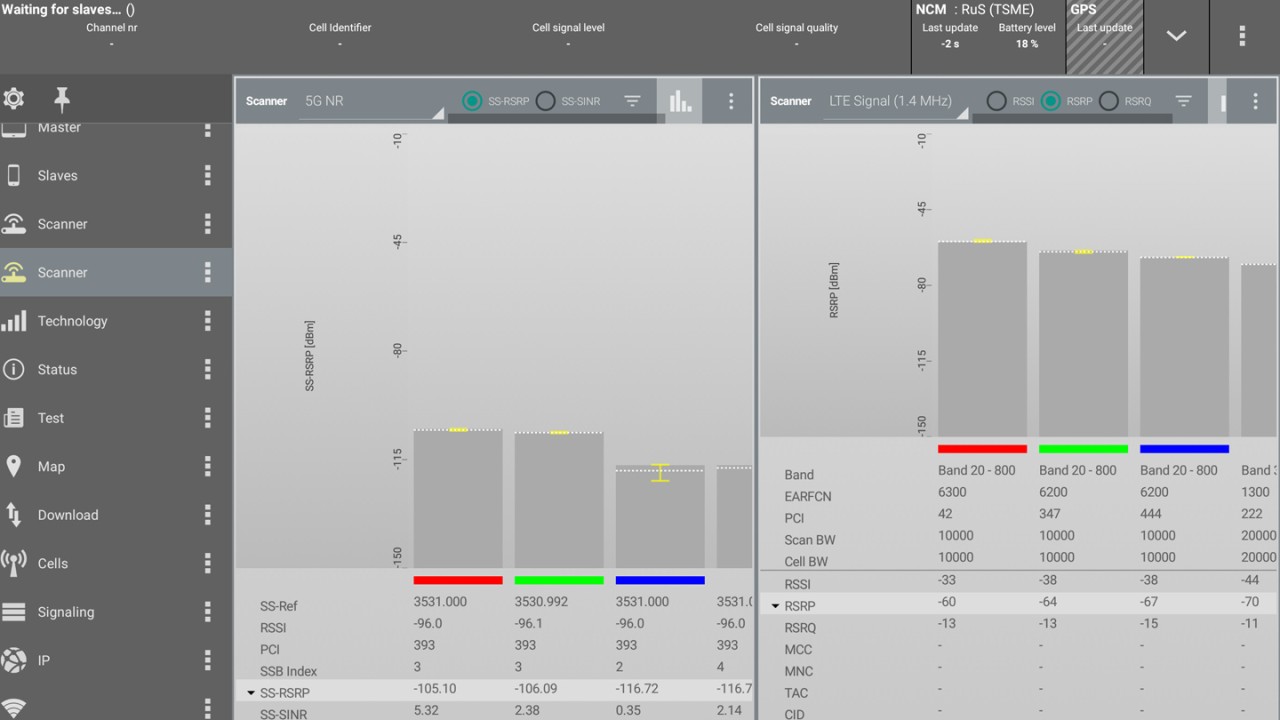Written by Peter Busch | November 19, 2019


For NSA mode, the link to the anchor site (usually low-frequency LTE) needs to be checked in parallel. The deployment will happen in the so-called FR1 (sub-6 GHz) band and FR2 (microwave, usually 28 GHz and higher).
Over-the-air measurements
The tests must also work in deployments where the radio interface is fully integrated (combined remote radio head (RRH) and antenna) or split into RRH and antenna, connected by jumper cables. The LTE anchor cell can use the same antenna or even a different tower.
For previous generations of cellular technology, site measurements could be executed via dedicated test ports. This is no longer a valid reference point for 5G, active or MIMO antenna systems.
Beam-centric measurements can be performed only over the air (OTA) in front of the cell site. However, some of the traditional quality metrics, such as error vector magnitude (EVM), are no longer a reliable indicator for a proper working site when measured over the air.
5G site testing process
Site acceptance is by no means trivial. With a well-defined test procedure and the correct test tools, a reliable and efficient process can be achieved. What are the typical required RF tests? How do you group them into different deployment scenarios and itemize the necessary test equipment?
After the installation of a 5G site, you need to ensure the fundamental cell site performance, that all parameters are inside the specified range and that the additional 5G capacity is advertised in the related LTE anchor cells (SIB 2).
For the installation:
- Check VSWR reflections via OSS counters.
- Ensure the PCI and beams are visible in the expected location (SS-RSRP, SS-SINR).
- Conduct power measurements on the allocated LTE anchor cell (RSRP, SINR).
- Run functional tests to ensure the correct integration of the 5G cell into the complete network.
You will need to troubleshoot:
- If reflection counters show problems, measure the reflection/DTF with a cable and antenna tester.
- If beams/PCI are not visible, check and correct the 5G site configuration file and check the cable and antenna.
- If the 5G cell is not utilized or the throughput is too low, check if the 5G cell is advertised on LTE-SIB 2.
- If the SINR is not as expected, check for internal interference (e.g., side lobes) and external interference.
Complex beam distribution
Depending on the deployment method, some of the tests may be unnecessary or make no sense. Without the detached antenna, the OSS can check on reflections, but the reflection cannot be verified by a reflection/DTF test on site.
Especially in FR 2, the beam distribution can be very complex. We have measured cells that distribute 64 beams; changing from one beam to another sometimes took just one step.

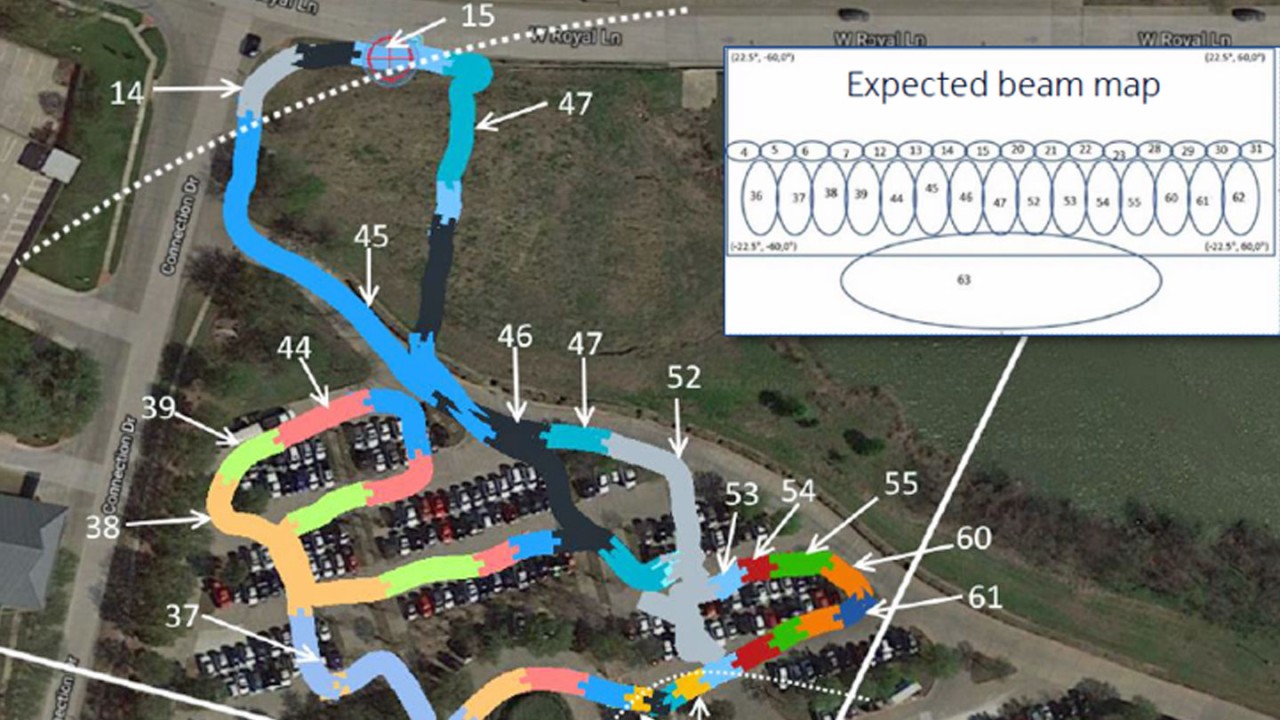
5G site testing solution
To conduct measurements, we used the 5G site testing solution from Rohde & Schwarz comprising the receiver/decoder R&S®TSMA6 plus the R&S®TSME30DC downconverter, the handheld troubleshooter QualiPoc Android, and the R&S®Cable Rider ZPH analyzer.
Initial indications if signals are present in the air can be found with a spectrum analyzer. The occupied bandwidth can be measured with the maximum hold function by using a directional antenna and pointing to the sector antenna. In the figure, a 40 MHz wide 5G carrier transmitting test data with the SSB section in the middle is visible.

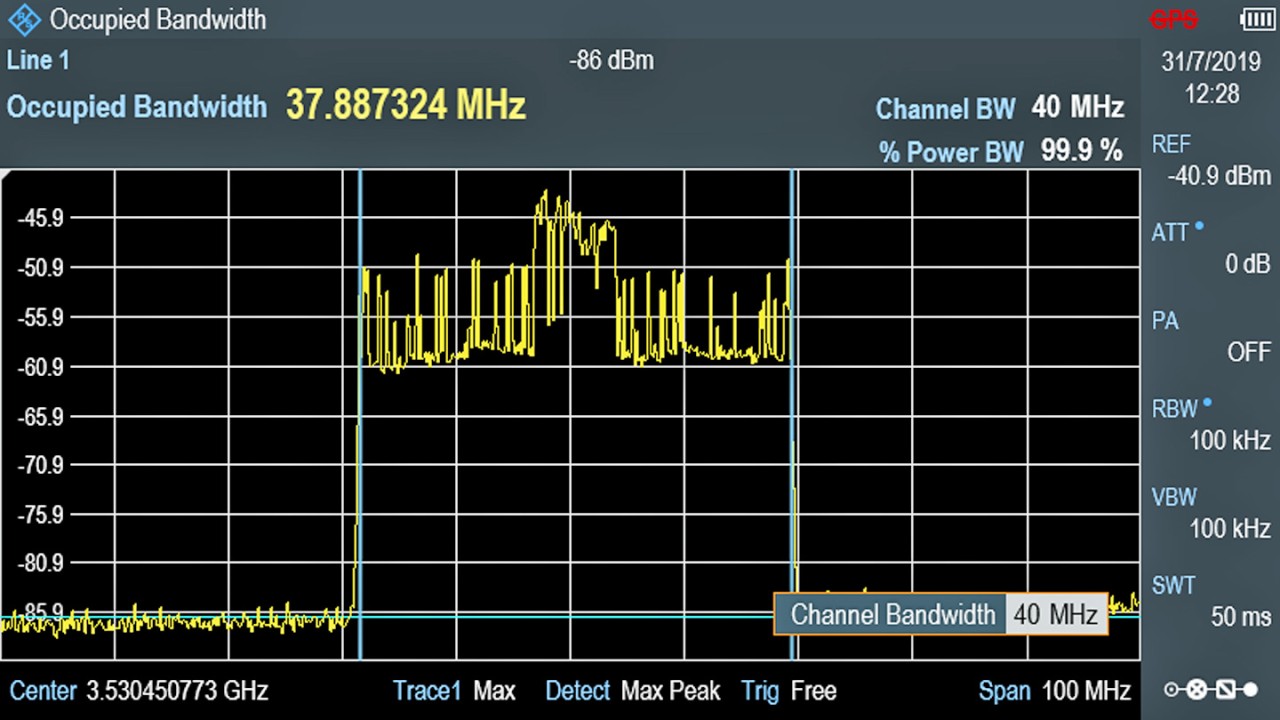
Going into zero span and using the video trigger, the SSBs can be seen in the time domain. In the screenshot below, you see seven repeatedly transmitted beams plus control data. Since this is a spectrum measurement, no PCI or SSB number indications are visible.

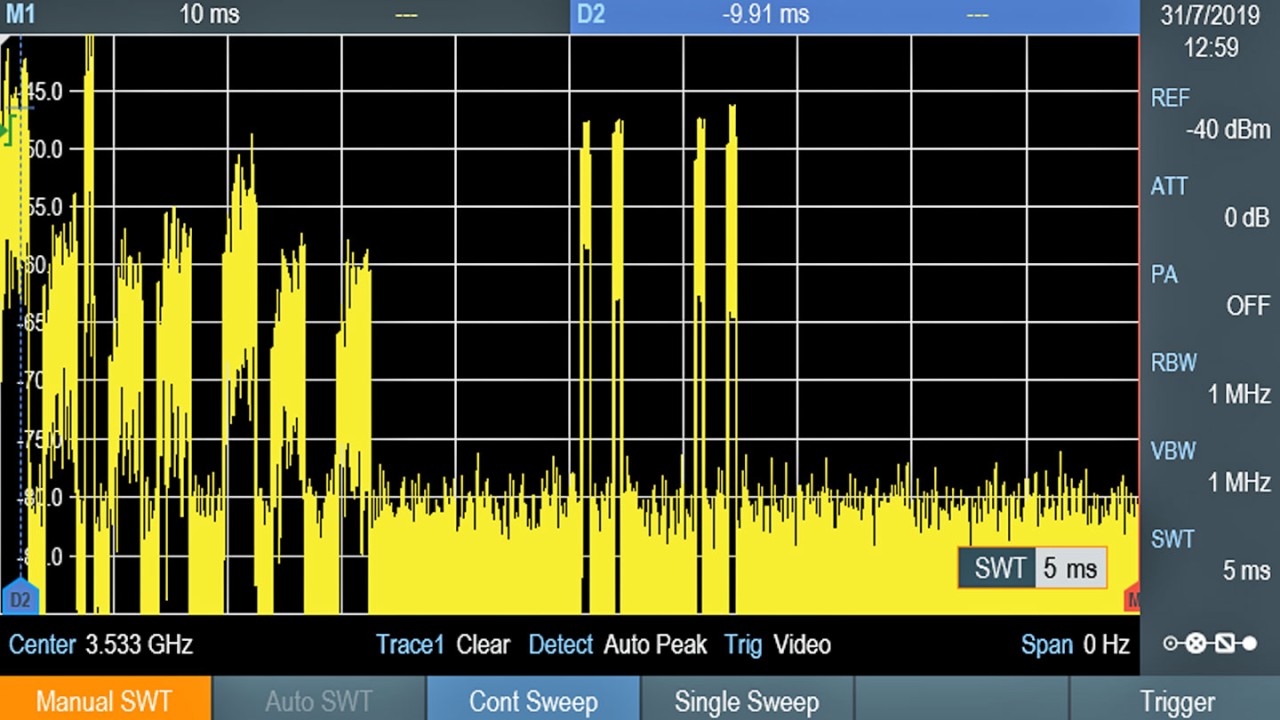
With the 5G site testing solution, demodulation and decoding can be added to the spectrum measurements. With Automated Channel Detection (ADC), all LTE and 5G signals are displayed. It is not necessary to set the channel, frequency or SSB position. More information about the signal content can be obtained by reading relevant broadcasting data (MIB and SIB).


By filtering, for example, via the band, PCI, MNC/MCC or SSB, you can select the signal of interest and check the availability of beams/PCIs, boundaries of beams/sectors, and side lobes. The results are displayed in a Top-N view (strongest signal in front) or as a graph in a value-over-time chart.


By adding a smartphone to the 5G site testing solution, functional tests, such as data uplink and downlink, and throughput measurements can be performed. The layer 1 parameter and layer 3 signaling can be measured and recorded for further troubleshooting.

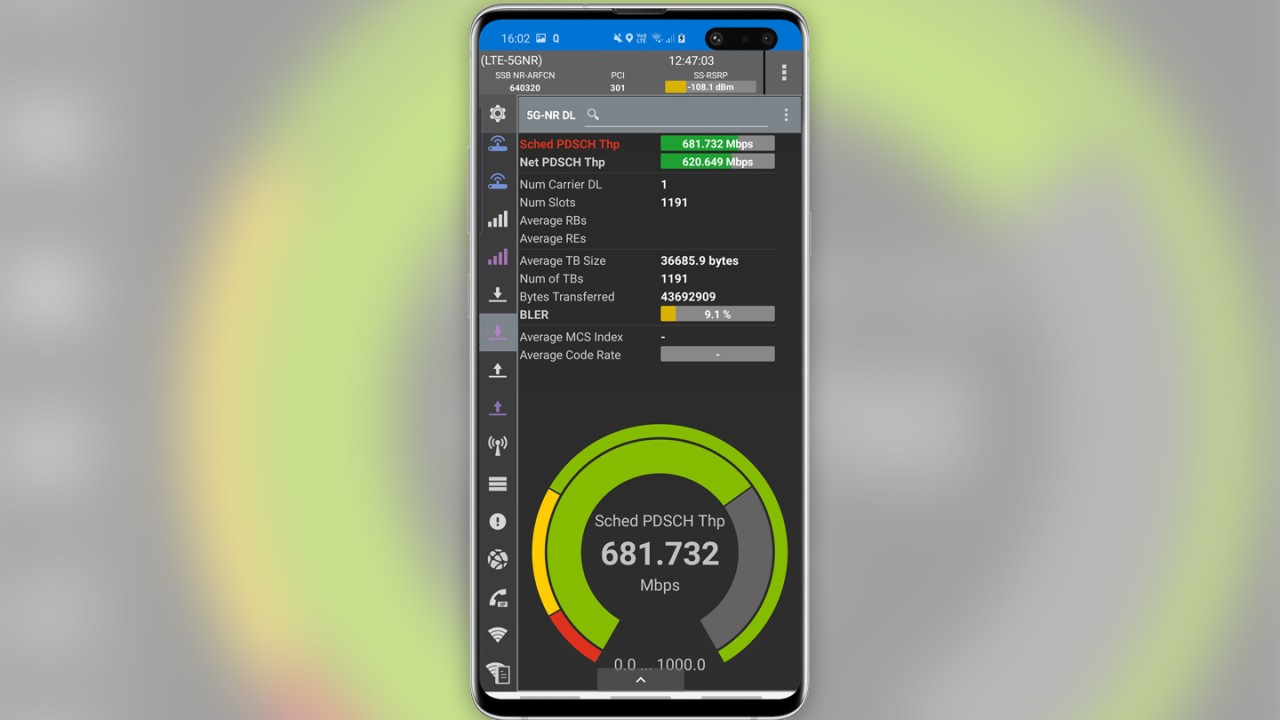
The unique 5G site test solution from Rohde & Schwarz helps operators to overcome the challenges of verifying correct site installation and to troubleshoot sites of 5G networks. The solution offers an efficient method to test layer 1 and layer 3 parameters, new performance KPIs, and the quality experienced (QoE) by end users.





